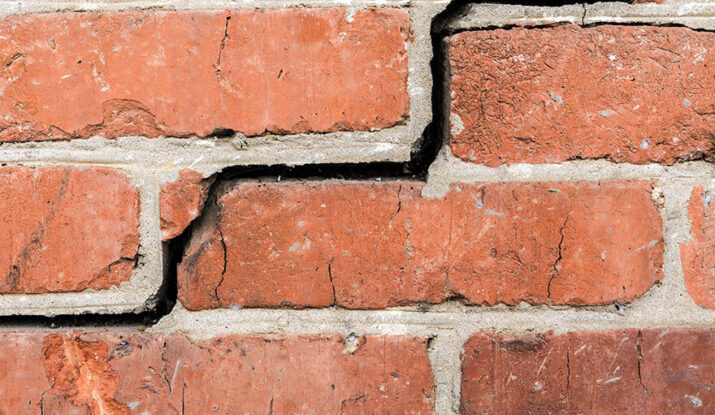How Freeze‑Thaw Cycles Damage Brick and What You Can Do About It in Toronto
Introduction
Toronto homeowners face unique challenges due to our cold winters and fluctuating temperatures. One of the most common yet overlooked threats is the freeze-thaw cycle, which quietly damages brick structures each season. At Fadom Masonry, we’ve seen firsthand how critical early detection and repair can be. In this post, we’ll explain exactly what freeze-thaw damage is and how you can protect your home.
Understanding Freeze‑Thaw Cycles in Toronto’s Climate
What Freeze‑Thaw Means for Brickwork
A freeze-thaw cycle occurs when water penetrates brick or mortar, freezes, expands, and then thaws. This continuous cycle puts immense pressure on your bricks, causing internal stress and surface damage over time.
Why Toronto is Especially Vulnerable
Toronto’s frequent temperature shifts between freezing and mild conditions mean bricks experience repeated expansion and contraction, greatly accelerating the deterioration process compared to milder climates.
Signs Freeze‑Thaw Has Damaged Your Bricks
Cracking Surface or Mortar
Small cracks are early indicators of freeze-thaw damage. They allow more moisture in, worsening the problem with each cycle.
Spalling or Flaking Layers
If your bricks are visibly flaking or chipping, it’s a clear sign they’re being damaged by water freezing and expanding beneath the surface.
Mortar Joint Separation
Mortar can weaken significantly during freeze-thaw cycles, causing joints to loosen or even separate entirely, compromising the wall’s integrity.
How Fadom Masonry Assesses Freeze‑Thaw Damage
Detailed Visual Inspection
We start with a careful visual assessment, looking for cracks, gaps, flaking bricks, and signs of shifting.
Moisture Testing and Thermal Analysis
Our advanced diagnostics include moisture detection tools and thermal imaging to pinpoint hidden damage and identify at-risk areas accurately.
Repair Solutions for Freeze‑Thaw Damage
Repointing and Mortar Replacement
Our experts meticulously remove and replace damaged mortar with durable, weather-resistant materials to restore structural strength and aesthetics.
Brick Replacement & Matching Techniques
When bricks suffer severe spalling, we carefully replace them with matched units, preserving the look of your home and preventing further damage.
Applying Sealants and Water‑Repellent Treatments
After repairs, we often apply specialized sealants to repel moisture and protect your masonry against future freeze-thaw cycles.
Preventive Maintenance Tips for Property Owners
Ensure Proper Drainage & Gutter Maintenance
Regularly inspect and clean your gutters and downspouts, ensuring proper drainage away from your brick walls to minimize water exposure.
Regular Sealing and Waterproofing
Schedule periodic waterproofing treatments to protect brick surfaces from water penetration, significantly extending their lifespan.
Regular Professional Inspections
Having your brickwork inspected annually can identify early signs of freeze-thaw damage, helping avoid costly repairs later.
What Happens If You Ignore Freeze‑Thaw Damage?
Escalating Structural Issues
Ignoring early signs allows minor damage to worsen quickly, potentially leading to serious structural issues like bowing walls or chimney instability.
Increased Repair Costs Over Time
Small issues left untreated escalate, drastically increasing repair complexity, costs, and inconvenience over the long term.
Conclusion
Freeze-thaw cycles are a constant reality in Toronto, quietly damaging your home’s brickwork every year. However, by understanding the risks, recognizing early signs, and taking proactive measures, you can safeguard your investment. Fadom Masonry is committed to providing expert solutions and maintenance to ensure your brickwork stands the test of Toronto’s challenging climate.
Frequently Asked Questions (FAQs)
1. How quickly can freeze-thaw damage affect my bricks?
Damage can start after just one harsh winter, although noticeable deterioration typically appears over several seasons.
2. Is freeze-thaw damage reversible?
No, existing damage isn’t reversible. However, timely repairs and preventive measures can stop further deterioration.
3. Can waterproofing completely prevent freeze-thaw damage?
Waterproofing greatly reduces risks but should be part of an overall maintenance strategy, including drainage and regular inspections.
4. How often should brick sealant be applied?
Generally, resealing every 3-5 years is recommended, depending on exposure and the type of sealant used.
5. Do freeze-thaw cycles affect all types of bricks equally?
No—some brick types, particularly older or softer bricks, are more susceptible. Professional assessment helps determine risk.
6. Can I identify freeze-thaw damage myself?
Yes, basic signs like spalling or cracked mortar are visible, but a professional assessment uncovers hidden issues more accurately.
7. Is freeze-thaw damage covered by home insurance?
Typically, gradual deterioration isn’t covered, but severe structural damage resulting from storms or unexpected events might be. Check your policy details.
8. Can landscaping help protect against freeze-thaw damage?
Yes, proper landscaping that directs water away from your home’s foundation can significantly reduce brick exposure to damaging moisture.

